
Even the ground beneath your feet can’t be trusted any more, says Mia Otokiak, describing how her husband was almost swallowed up by a giant sinkhole.
Riding a four-wheel drive ATV, he stopped just in time when a big section of the main trail out of Cambridge Bay became a deep crater. Soil that had been permenently frozen just melted and washed away as previously uncommon heat becomes the new normal. It’s frightening, but just one of many sudden changes happening in Canada’s Arctic as a traditional culture copes with modern reality.
On Seabourn Venture’s recent voyage through the Northwest Passage it became clear that more than the weather is changing life in the Arctic. Visits we make on our journey to some of the most remote towns on Earth revealed that what was an isolated self-sufficient life adapted to the ice and isolation has seen an upheaval in a single generation.

Permafrost isn’t perma any more
Does the Great White North need a new nickname as summer days can get warmer than Florida and there’s no ice for months at a time? Mia Otokiak has lived all her life in Cambridge Bay, a town in Canada’s Nunavut that’s 2,000 miles north of Toronto. As a resource person for Seabourn Cruises on Seabourn Venture’s three-week Arctic journey, she recounted stories of land that’s always been permanently frozen melting to quicksand in recent summers as Arctic temperatures warm four times faster than the rest of the world.
In Cambridge Bay, north of the Arctic Circle, temperatures have reached the 90s in July, compared to a long-term average high for the month of 55. In Nunavut for several days in July, 2023, it was warmer than any place in Florida. The Seabourn Venture is capable of breaking through ice, but there was none to be seen on our Northwest Passage journey.

Amazon reaches the Arctic
Everything in Nunavut is still very isolated, and yet it’s also become connected as never before.
Flying has always been the prime way to get supplies into the settlements along the Northwest Passage when the water freezes solid from October through May. When I travelled to Cambridge Bay and other Arctic communities as a correspondent for The Globe and Mail in the 1990s, there were only a couple of propeller plane flights here per week. Freight costs were so high that a single potato could cost $2 to ship in. If they didn’t have what you wanted at the Northern Store or Co-op in the hamlet, it wasn’t available and you’d have to add it to a shopping list for an entire year’s worth of supplies that would be delivered when a cargo ship could break through the ice of bays that years ago still stayed frozen solid even in August.
How things have changed. Now, there are regular flights to Cambridge Bay’s airfield to supply a recently developed gold mine and the government’s growing presence. Cambridge Bay—population 1,760,–has become the administrative and business centre of the Kitikmeot Region. And at the new campus-like Canadian High Arctic Research Station, scientists from down south are living year-round doing studies of climate changes. And there’s no ice anywhere in August.
One of the Arctic researchers who is from Quebec says he’s discovered he can order cases of Coca-Cola air delivered by Amazon more cheaply than buying them at the Northern Store. And he can count on delivery almost as quick as if he were ordering in Montreal.
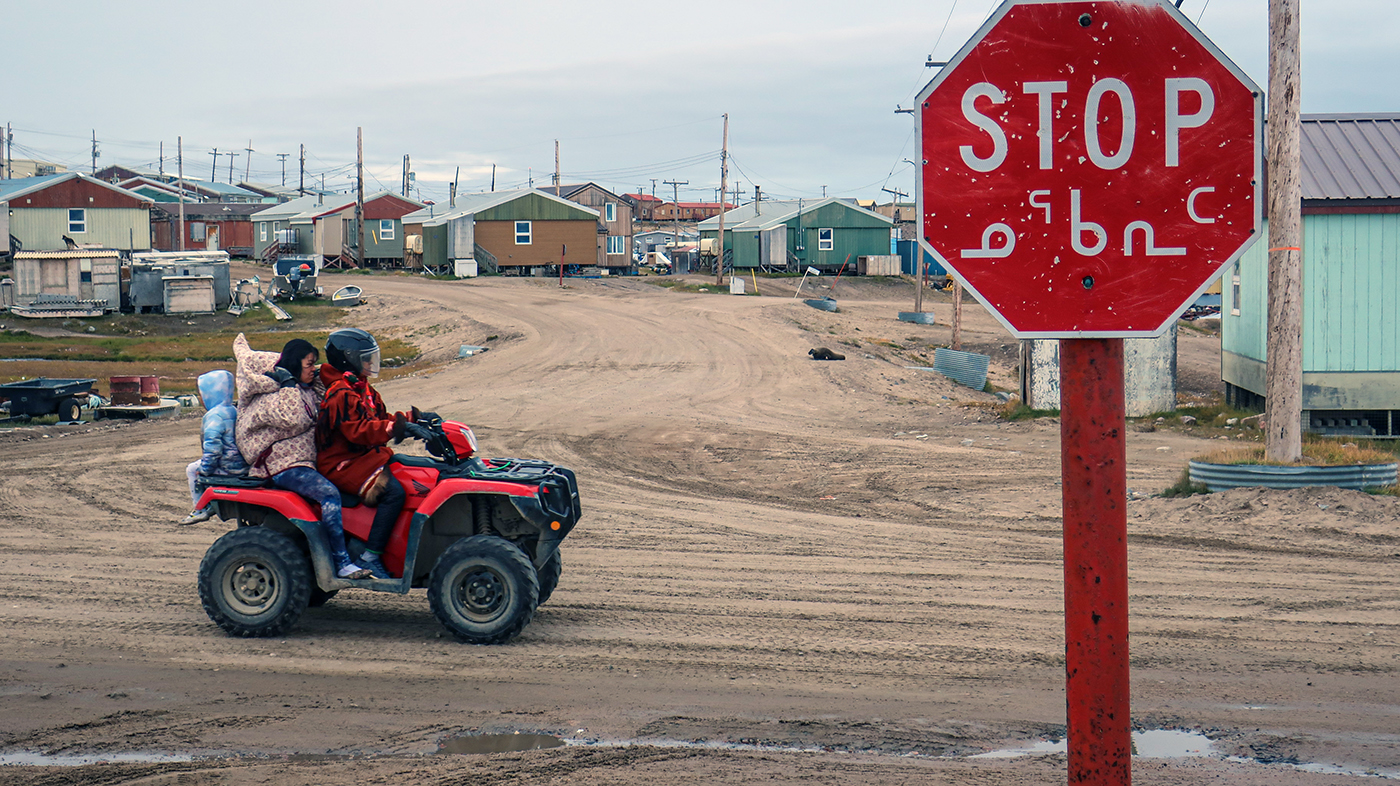
Horsepower replaces dog teams
Another notable difference in the Arctic settlements is that teams of sled dogs are no longer common sights. Just a generation ago, homes routinely had kennels and teams sled dogs on leashes in their front yards, but today pickup trucks and ATVs are the way people get around. The dogs and cats you see in town these days are mostly household companions. One sure sign of growing affluence is that there’s now a Tim Horton’s coffee shop in Pond Inlet, which has a population about 1,600. It hasn’t got a drive-in window yet, but the parking lot is busy.
Hockey’s more popular than hunting
Ono a visit to the community of Pond Inlet, population 1,600, Seabourn’ Venture’s guests were hosted in the community arena to a show of singing, dancing and Inuit traditions including hunting skills requiring strength, jumping and high kicking. While they still learn the necessary expertise, many of the young people I spoke with said they no longer spend much time on the land hunting or going fishing. There’s no shortage of food and it’s really more comfortable to find things to do close to home, they explain.
After the show, we get to see a more modern community activity: a professional-looking hockey rink for Pond Inlet’s local team that’s part of an Arctic communities hockey league that at the end of the season competes for the coveted Qamutik Cup.
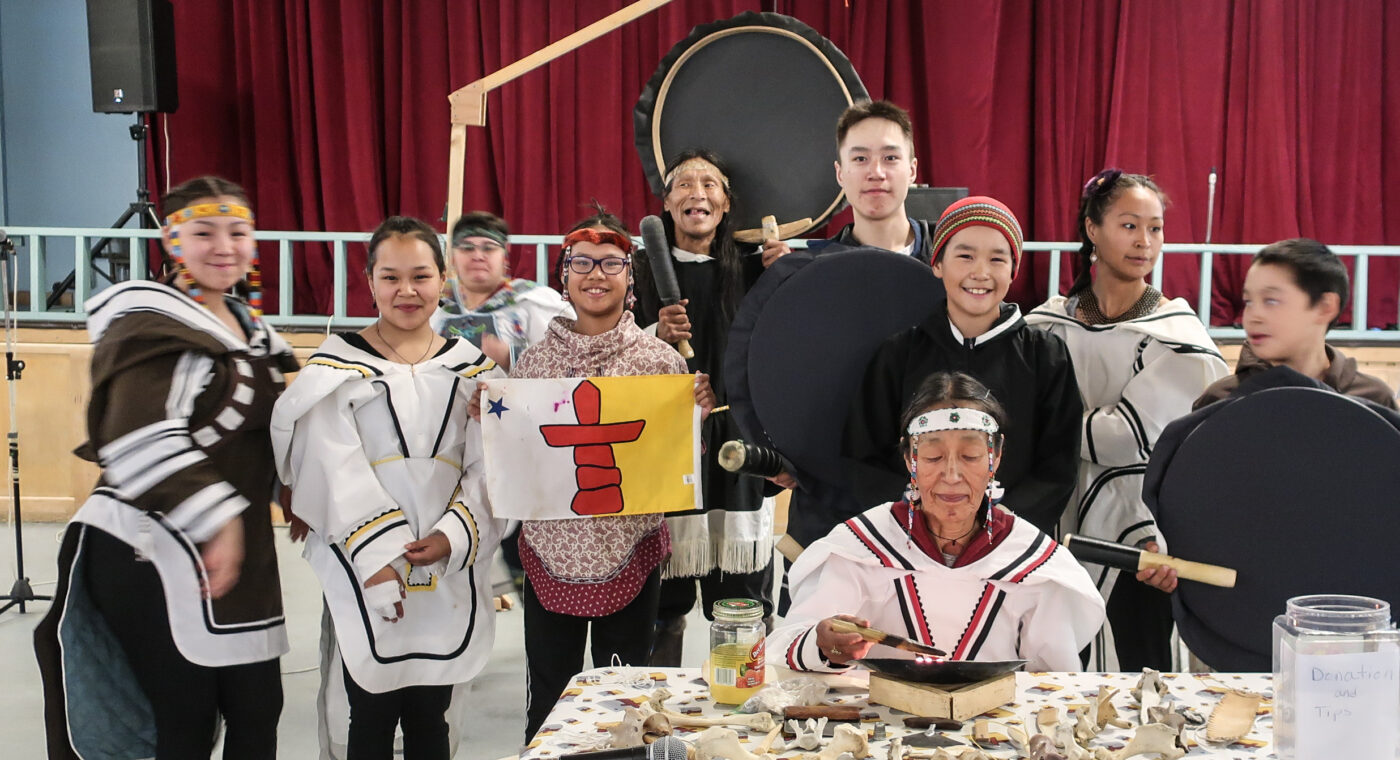
Traditional knowledge may be losing relevance
A sad fact from Mia’s cultural presentations on Seabourn Venture was the effect all these changes have had on the elders of the community. Inuit have travelled, hunted and fished in the Arctic for thousands of years and survival always depended on the accumulated knowledge of the elders about seasons and animal movements. Seniors were always the arbiters of where it was safe to go on the ice or where to trek for successful hunting. But with the dramatic climate changes and access to the Internet, young people don’t turn to the elders for advice as much as they once did, Mia says. Family ties are still strong, but the way it was in the old days just seems less relevant.
Kids everywhere have always challenged the way things are done, but it is unfortunate that a lot of wisdom that’s vital for survival in such a harsh climate may be lost.
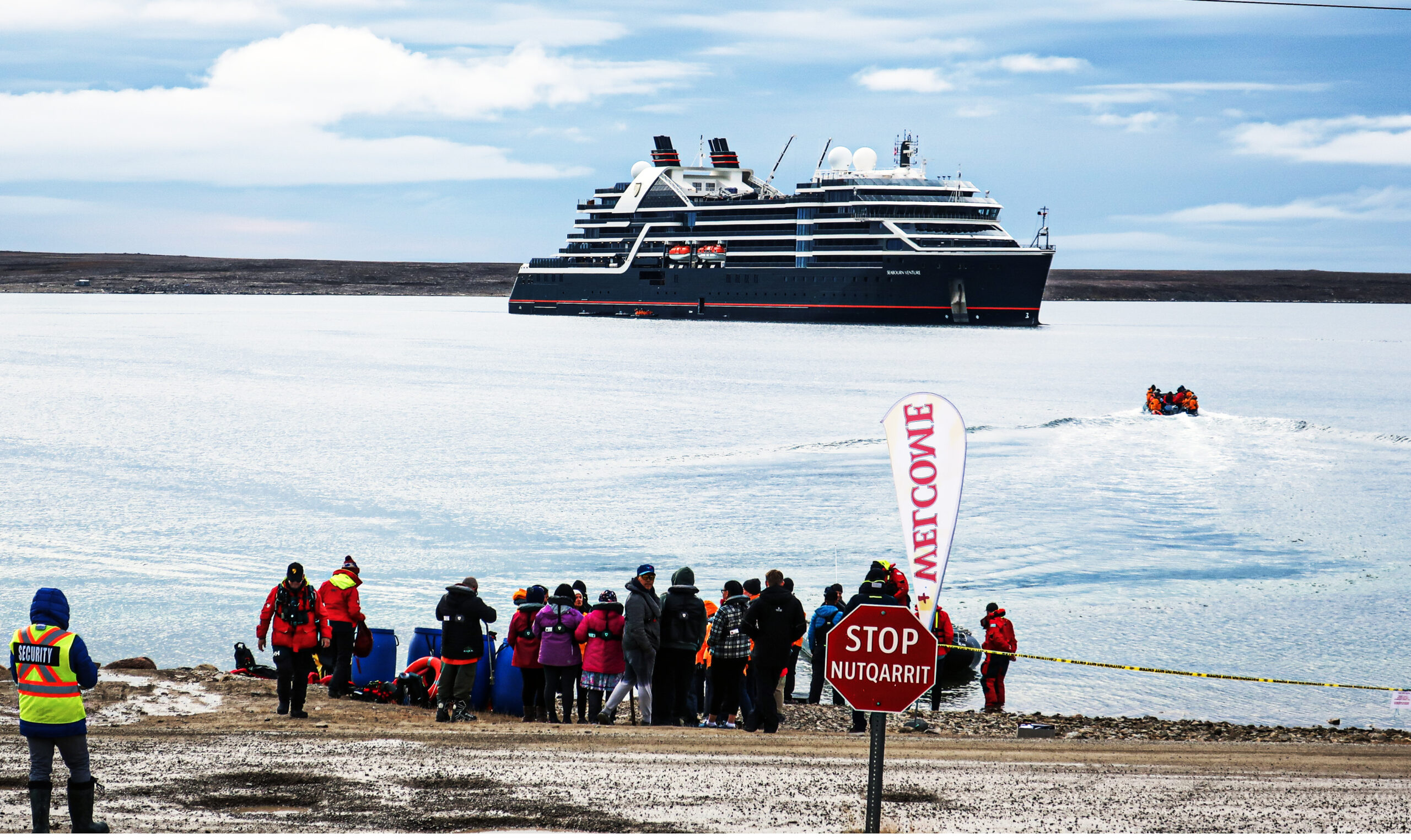
Tourism is definitely appreciated
While tourism has become a burden for many cities these days, visitors are still a welcome rarity in Canada’s northern hamlets. The 200 guests who arrive on Seabourn Venture for a one-day visit are definitely the highlight of their week. We’re greeted enthusiastically in the communities, with tours, local shows and food tastings.
To show our appreciation in each of the hamlets Seabourn visits, there’s a gift for the community: pallets of food and supplies based on their wish lists of things they’d like to receive for their hospitality. Cambridge Bay didn’t ask for fresh meats or veggies, but rather heavy staples that are expensive to ship up here and treats that would be hard to find. Their shopping list included non-pareiles for party cakes, cartons of Decaff Segafreddo coffee, bulk bags of hot chocolate mix and cases of extra virgin Italian olive oil.
The list for Pond Inlet included flour and rice along with bulk packs of Frosted Flakes and Rice Crispies and Moroccan mint tea. For treats they specified five kilograms of shelled hazelnuts and 20 kilos of extra long spaghetti. Mamma Mia!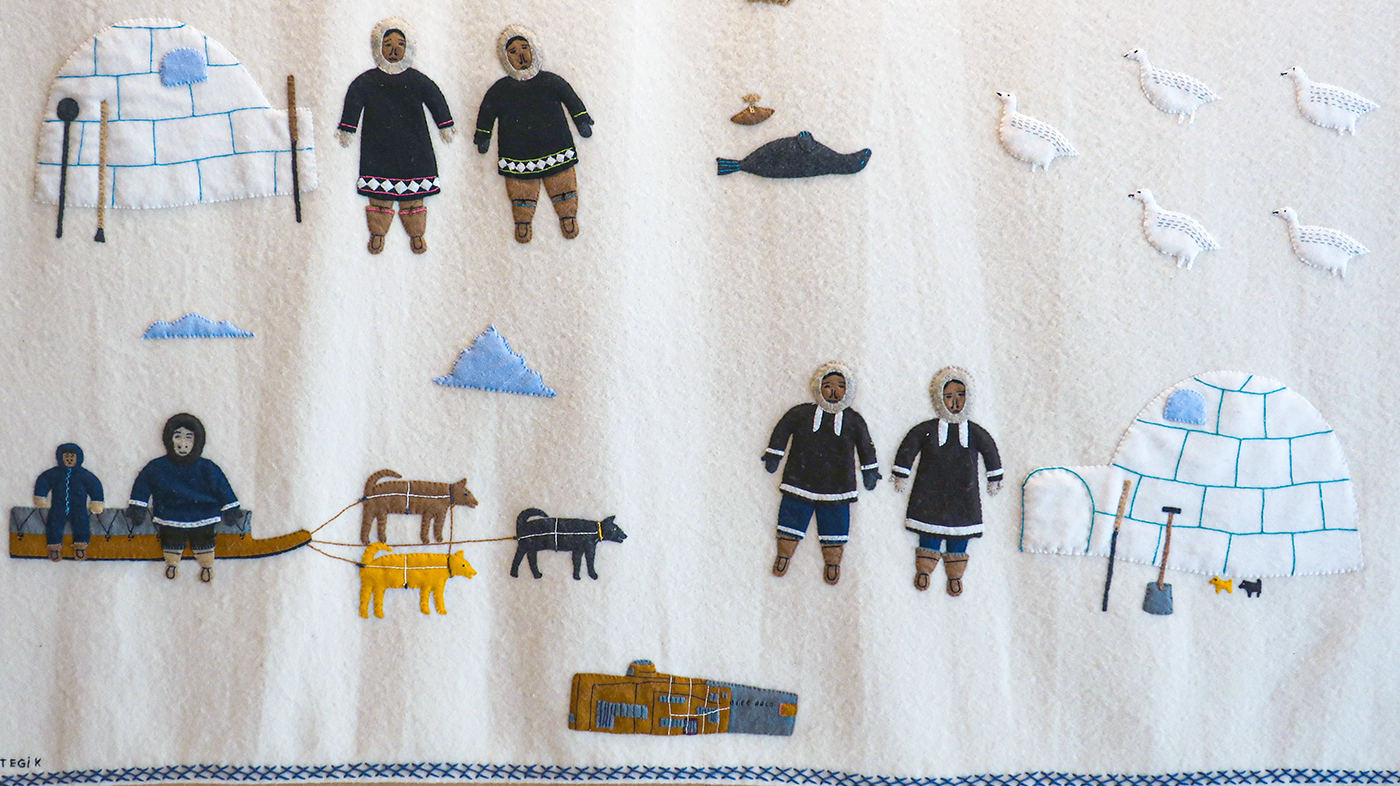
A quilt recalls traditional Arctic life in igloos and sleds before towns developed –Photo by Wallace Immen
Change actually isn’t new
In fact things have been changing in Canada’s Arctic for quite a while. Inuit were nomadic and there were no permanent settlements in the Far North until the 1920s when traders, including the Hudson’s Bay Company, and the RCMP set up trading posts..
On the sheltered shores of Cambridge Bay, the Anglican Church built a mission in the 1920s, and the Roman Catholic Church arrived in the 1940s. A long-range navigational beacon called Loran was established in 1947, and a small community of Inuit developed on the east side of the bay about that time. Construction of CAM MAIN in 1955, one of the largest manned radar stations in the Distant Early Warning System, offered job opportunities to hundreds of Inuit, who settled nearby. As the government encouraged permanent homes with subsidies, towns grew and nomadic life had largely disappeared by the 1980s.
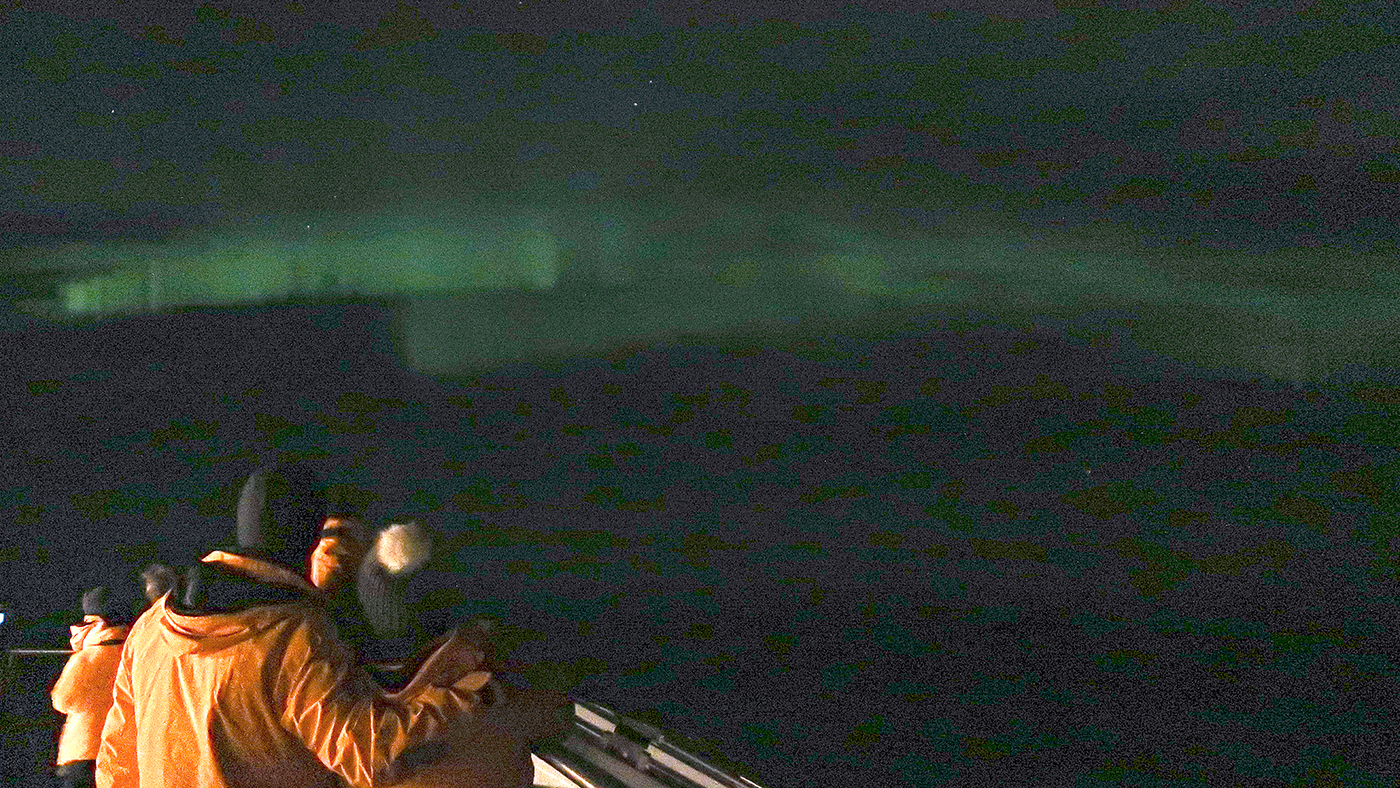
Fire in the sky: the Northern Lights still shimmer
Some things can still be counted on, though. The gold and peach sunsets are revelations to cruisers on Seabourn Venture from lower latitudes. And at night we’re rewarded by a colorful show of the Northern Lights dancing in the skies overhead in tones of gold, green and red. They’re better than any fireworks show you can see anywhere else.
Every day and night on Seabourn Venture’s Northwest Passage is an unforgettable experience. Make it part of your wish list.
Seabourn Venture will depart August 6, 2025, from Reykjavik to Anchorage, Alaska, followed by a second, eastbound voyage departing August 27, 2025 from Anchorage to Reykjavik. Both voyages will include pre- and post-cruise charter hotel stays in Anchorage and Reykjavik.
Story by Wallace Immen, The Cruisington Times

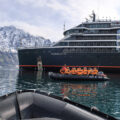


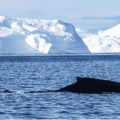

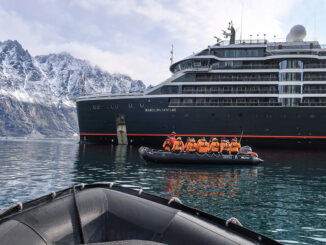
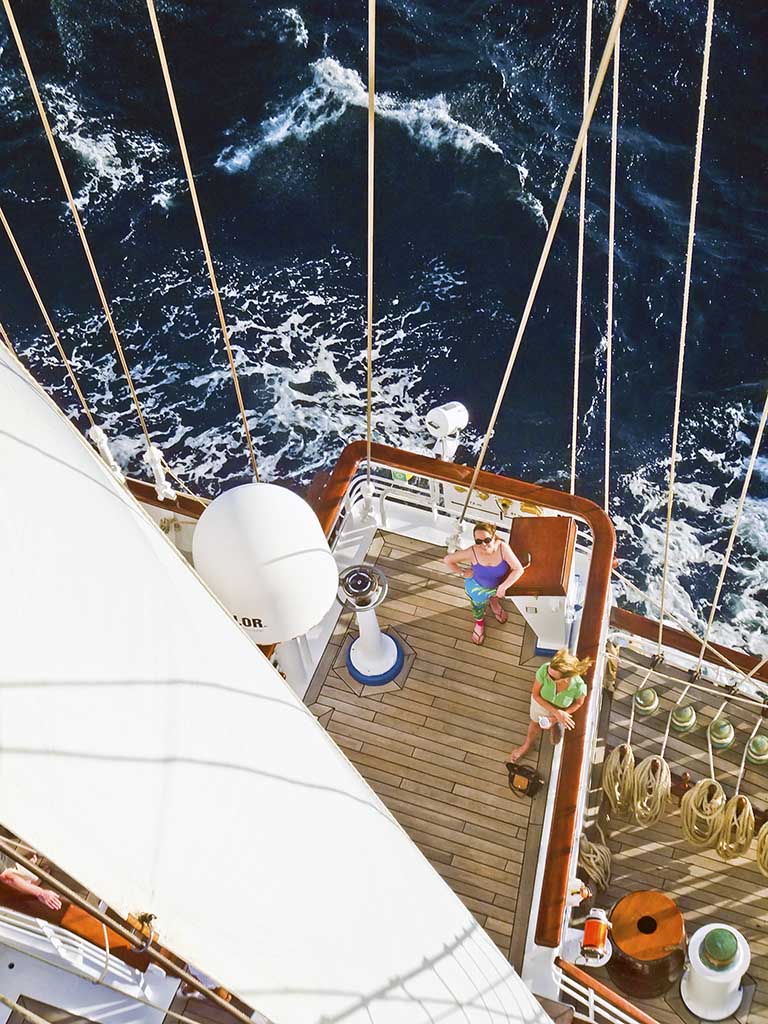
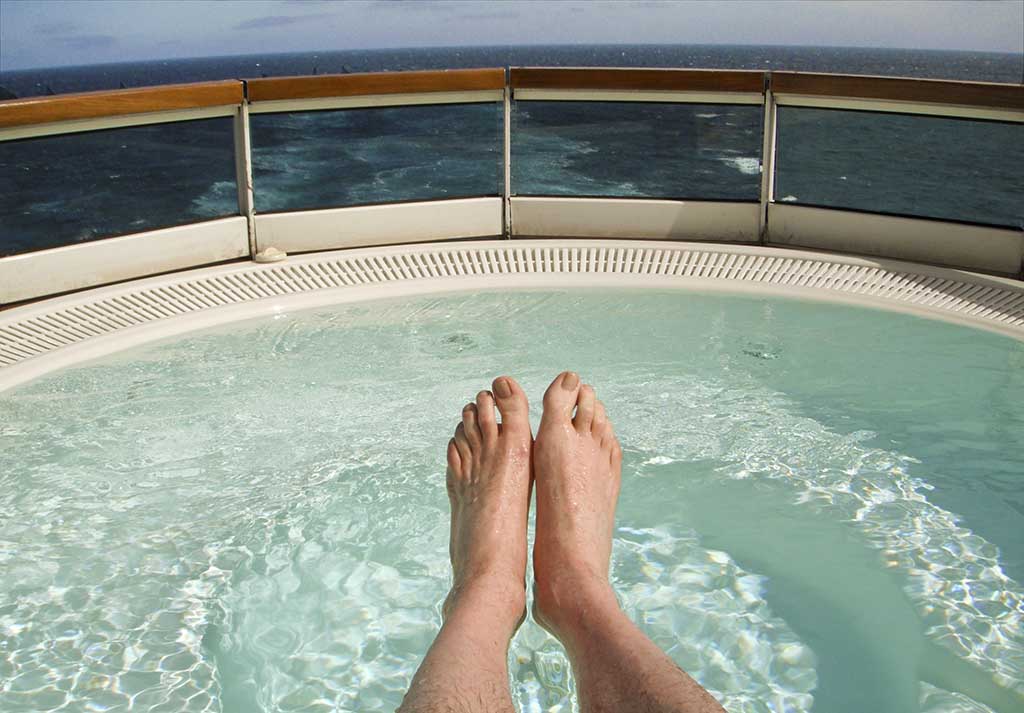
1 Trackback / Pingback
Comments are closed.